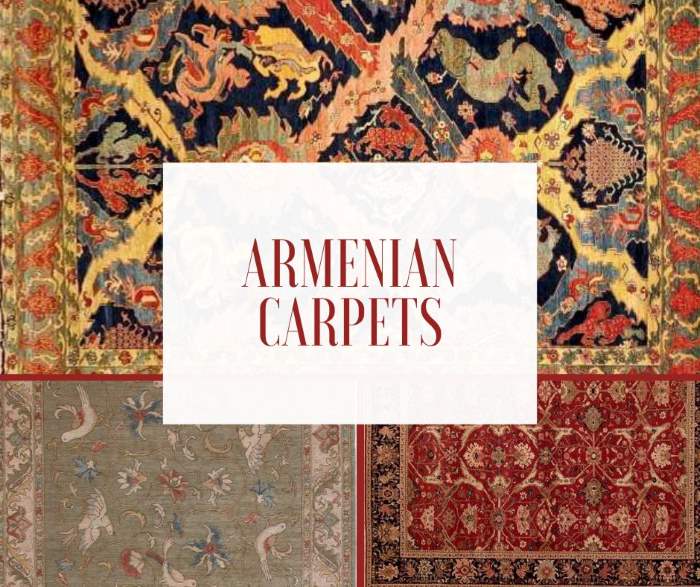
The world of Armenian carpets is a true journey through time. From ancient origins dating back to 600 BC, Armenian artisans have been producing carpets throughout history.
Arab scholars of the Middle Ages esteemed Armenian rugs as luxury commodities, while Marco Polo himself lauded them as unparalleled in quality. The Armenian word “karpet” (կարպետ), is derived from the root “kap” meaning “knot”. Moreover, it entered Medieval Latin as “carpita” signifying “thick woolen cloth”, possibly influenced by trade routes through Armenian kingdoms like Cilicia. This highlights Armenia’s historical significance in carpet production and trade.
Of course, there were some setbacks in carpet weaving influenced by the Armenian Genocide early in the 20th century and the Soviet period. However, the recent endeavors by such companies as Tufenkian and Megerian aim to revive this art. Let’s explore the legacy of Armenian carpets.
Armenian Carpet Weaving Origins
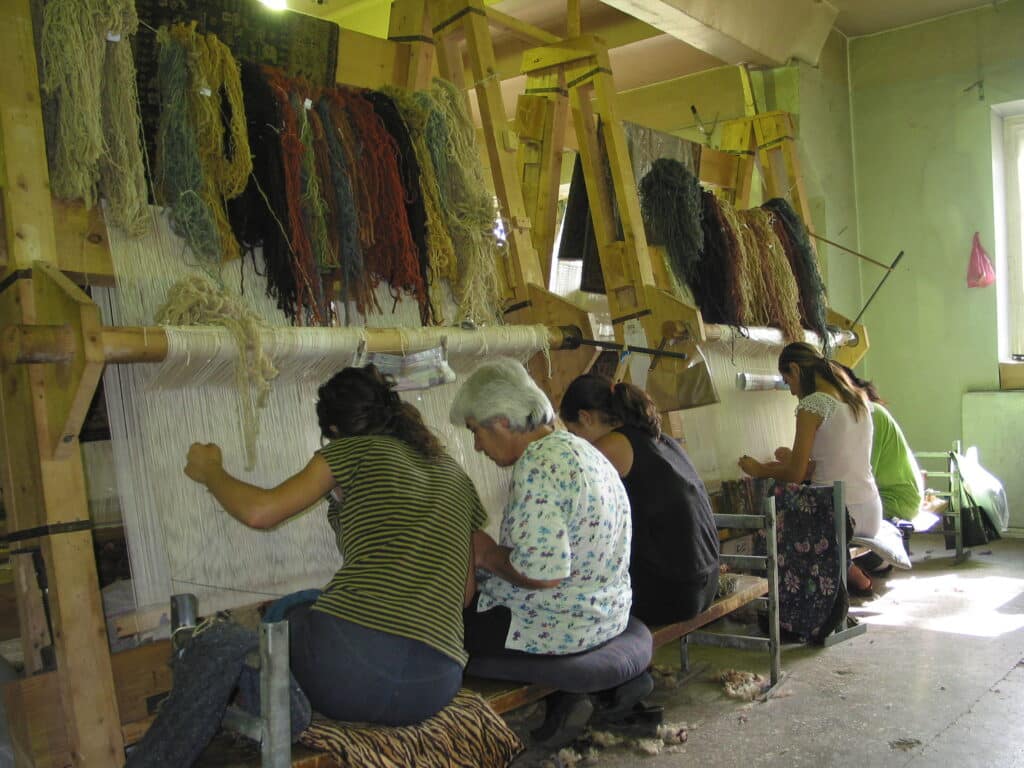
The origins of Armenian carpets trace back to ancient times, with archaeological findings dating as far back as the 7th century BC. Although complete rugs from this era are rare, fragments in various Armenian sites provide valuable insights into early carpet weaving practices. For example, there is the Pazyryk carpet. It was discovered in a tomb found in Siberia dating from the 5th to 3rd century BC.
Some sources assume it is one of the oldest surviving knotted carpets. Experts attribute its origin to the Armenian highlands, evident in its use of the Armenian double knot and the red dye derived from Armenian cochineal.
Ancient writings, including those of Herodotus in the 5th century BC, attest to the Caucasus region’s reputation for producing vibrant and enduring rugs. Moreover, excavations in northeastern Armenia have revealed ancient weaving tools and rudimentary looms. They date back to the 4th–3rd millennium BC, further highlighting the region’s early involvement in carpet making.
Throughout history, Armenian carpet weaving flourished in various regions. The carpet weaving in Ayrarat, Vaspurakan, and Artsakh was thriving. There were specialized workshops with elite clients. Despite periods of decline, such as during the Seljuk and Tatar-Mongol invasions, carpet production persisted in areas like Artsakh and Lori.
By the late 18th and early 19th centuries, Armenian carpet weaving experienced a resurgence, reaching its peak in the late 19th and early 20th centuries. Commercial significance grew in several weaving centers. Today, efforts to preserve and revive Armenian carpet weaving traditions continue, honoring its rich history and cultural significance.
Main Features of Armenian Carpets
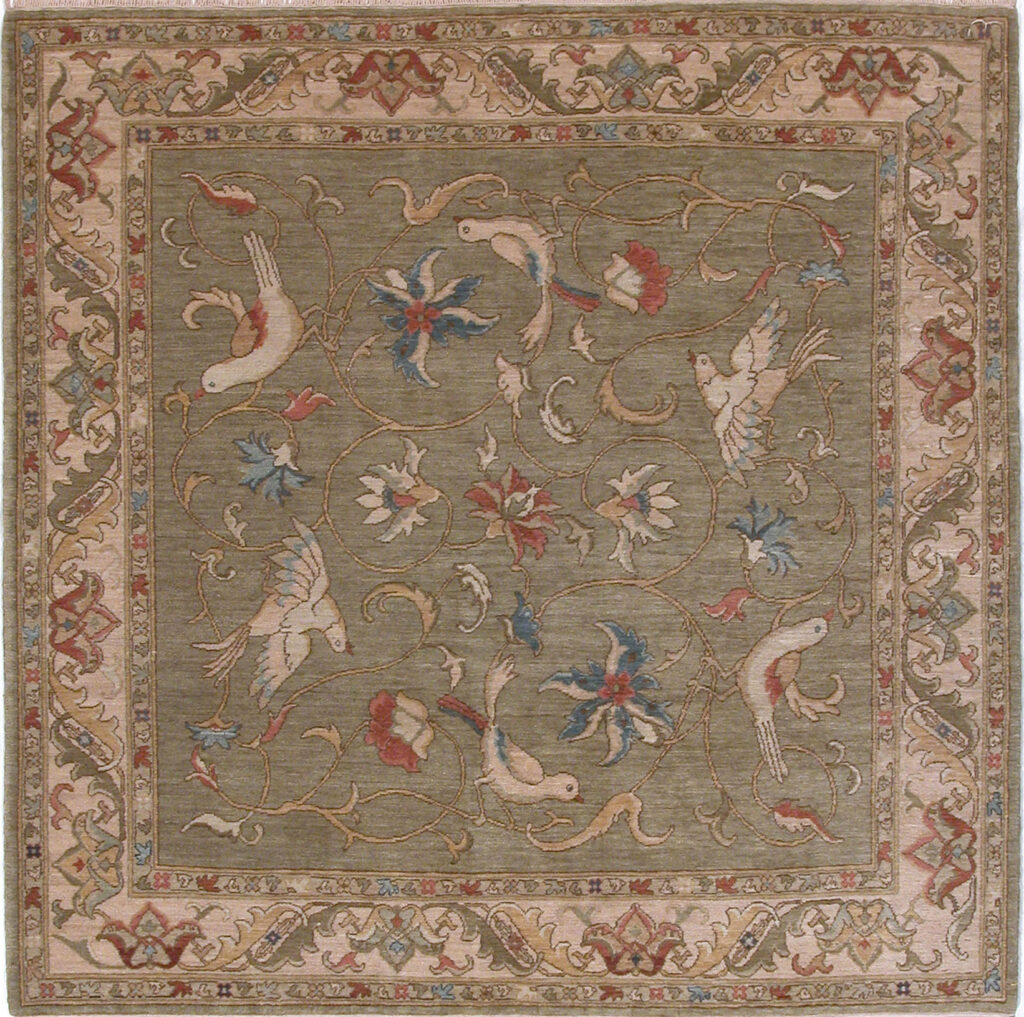
Let’s speak about the distinctive features of Armenian carpets. The carpets are woven by women typically with a wool warp, wool weft, and double knots. The wool used in carpet weaving was sourced from local breeds of sheep cultivated in various regions of historical Armenia. Double knots were also one of the reasons why they have superior quality and durability.
Beyond their common features, Armenian carpets have a diverse array of types and subtypes, each reflecting regional variations shaped by local economic, climate, and cultural factors. There were carpets with crosses or cruciform compositions and visual motifs depicting everyday life.
Additionally, there were typical geometric patterns, floral motifs, and radiant compositions. A hallmark of Armenian carpets is their vibrant array of colors derived from natural dyes. Notably, the dye “vordan karmir” famous for its deep red hue was used.
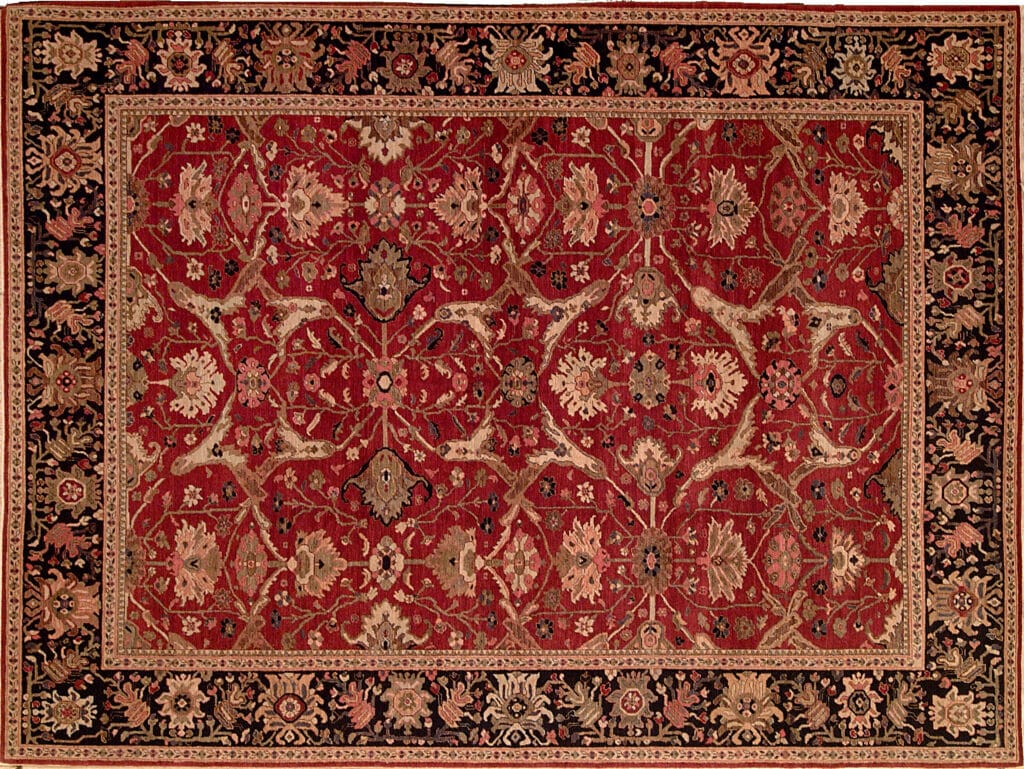
Vordan Karmir
The red color is the one in the rich and diverse color palette that stands out. Among these dyes, “vordan karmir” is famous for its exceptional quality and strong pigment. It was derived from the cochineal insect indigenous to the Ararat plain.
Throughout history, the cultivation of vordan karmir and other natural dyes played a crucial role in Armenian carpet weaving. Roman and Arabic sources pointed to the superior quality of Armenian dyes, which were popular in neighboring regions.
Vishapagorg or a Dragon Carpet
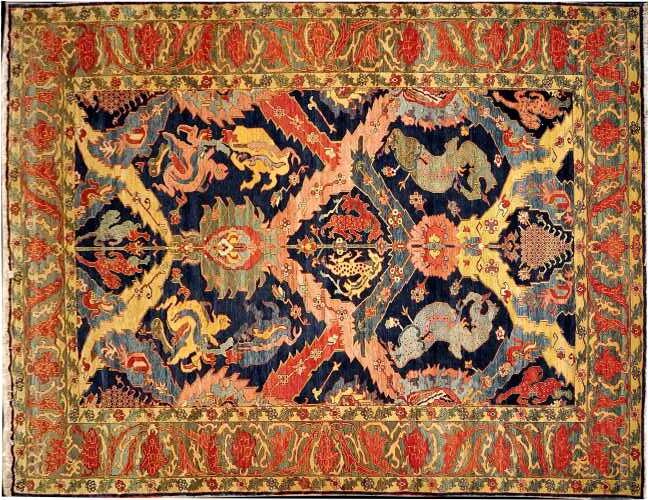
There are several main types of Armenian carpets but one of the most unusual ones is “Vishapagorg” or “a dragon carpet”. It originated from the 14th to 17th centuries and represents a distinct category within Armenian carpet weaving.
They stand out thanks to their execution technique and regional variations and their intricate patterns and symbolic motifs. Vishapagorg has a systematic arrangement typically featuring a vertical pattern that gradually unfolds across the carpet’s surface. There is a mixture of plant and animal motifs that symbolize the interconnectedness of nature’s elements. At the heart of these carpets lies the vishap, or dragon, surrounded by motifs such as rosettes and blossoming flowers, reminiscent of phoenix wings. The inclusion of the phoenix bird emphasizes themes of resilience and renewal.
In addition, these carpets hold significant cultural and historical importance for Armenians. They embody themes of protection, victory, and spiritual strength. Armenians believed that having this carpet at home would protect them from evil.
Famous Armenian Carpets
There are numerous stories associated with the Armenian carpets. One of the most touching episodes is the story of a rug woven by the orphans who survived the Armenian Genocide. It took over 18 months for Armenians to weave it in Ghazir, Lebanon.
This masterpiece was presented to President Calvin Coolidge in 1925. The Coolidge family returned it to the White House in 1982 where it is stored. Last time the rug with over four million hand-woven knots went on display in the White House in 2014.
Where to See Carpets When Visiting Armenia?
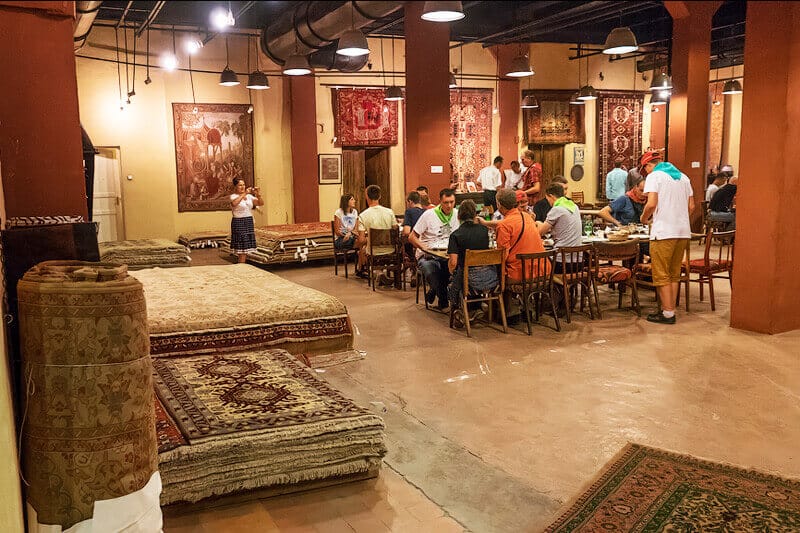
A number one place that comes to mind is the Megerian Carpet Museum which offers a comprehensive exploration of Armenian carpet-weaving traditions. You can book a tour and see the carpets or even purchase one.
Another option is the Vernissage open-air market in downtown Yerevan. Of course, it’s not a museum having some unique pieces but there are also some handmade samples.
Additionally, follow the exhibitions that open in the museums. If you are visiting Armenia this year, a temporary exhibition at the History Museum of Armenia is working till September 3, 2024. The museum provides a chance to admire 19th-century Armenian carpets from the private collection of James Tufenkian. There are also archival photos along with videos from the factory of the Tufenkian Artisan Carpets showing how carpets are made.
